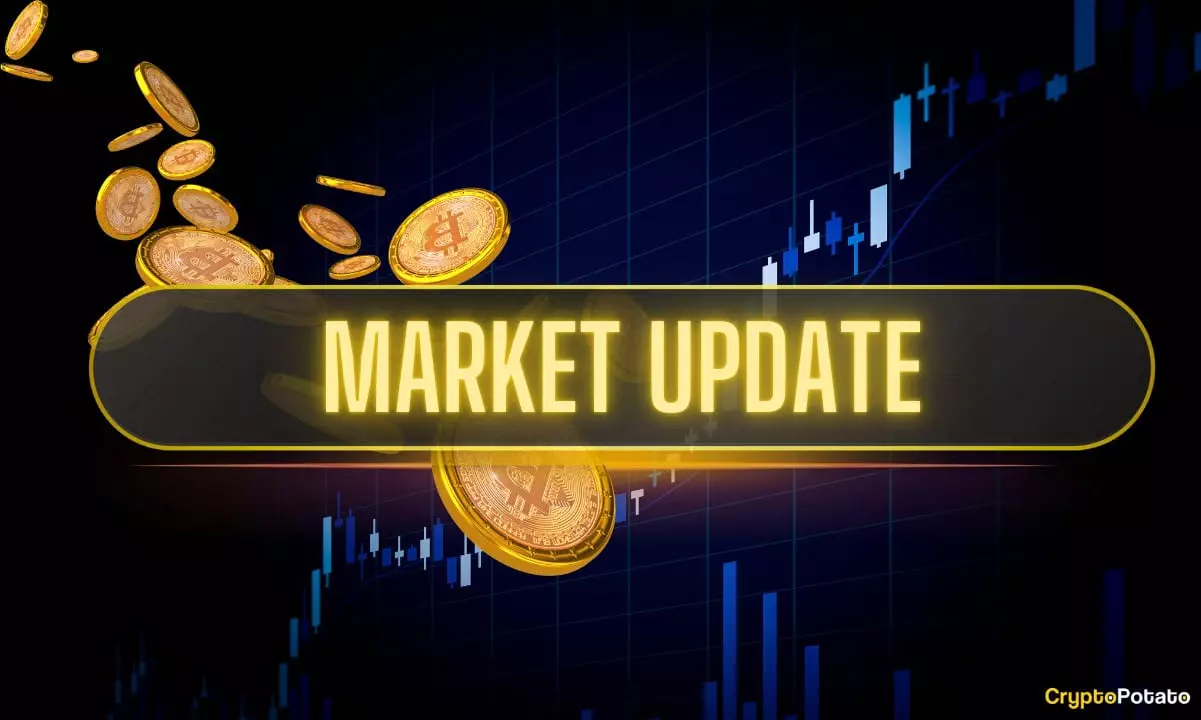In recent weeks, the cryptocurrency landscape has undergone a seismic shift that demands closer scrutiny. What once appeared to be a burgeoning wave of institutional interest and retail enthusiasm now reveals itself as a fragile veneer over a volatile market teetering on the edge of instability. The narrative of relentless gains has given way to a stark reality: underlying vulnerabilities threaten to undermine the illusion of perpetual growth. As Bitcoin, the flagship crypto, struggled to sustain its recent highs and faced sharp corrections, altcoins temporarily soared—only to succumb to rapid downturns that highlighted the sector’s inherent unpredictability. This pattern is symptomatic of a market increasingly driven by speculation and short-term momentum, rather than sustainable fundamentals. Beneath the surface, a complex web of macroeconomic tensions, technological shifts, and shifting investor psychology indicates that the current bullish frenzy might be nothing more than an unsustainable bubble.
Bitcoin’s Short-Lived Breakout: The Illusion of Strength
Bitcoin’s recent rally to an all-time peak of over $123,000 was not just exciting— it was emblematic of a market still intoxicated by hype. However, the subsequent retracement of nearly $7,000 within hours revealed that the rally was not built on firm ground. The retraction below $115,000, particularly triggered by the revelations of Galaxy Digital offloading $1.5 billion worth of BTC, underscores a critical flaw: institutional exposure may be fueling short-term peacocks, but it does little to establish a resilient foundation. This volatility exposes the myth that institutional backing always equates to market stability; rather, it often introduces new risks and amplified reactions. Despite some recovery, Bitcoin remains vulnerable, unable to decisively reclaim key support levels. Its recent performance underscores the precarious nature of current investor confidence—fragile, easily shaken, and susceptible to external shocks.
Altcoins: The Double-Edged Sword of Momentum
While Bitcoin wobbles, alternative cryptocurrencies have experienced a temporary euphoria. Coins like Litecoin, Enjin (ENA), and Crypto.com (CRO) have posted spectacular gains, suggesting a shift of capital into more speculative assets. Binance Coin, in particular, soared past $800 to reach a new all-time high, only to recede slightly afterward. Ethereum’s recent sprint to nearly $3,850, spurred by inflows into spot ETFs, exemplifies how market sentiment has become increasingly driven by liquidity inflows and institutional interest rather than intrinsic value. Yet, this “altseason”—a period of outperformance among altcoins—appears to be a fragile phenomenon, quickly interrupted by violent corrections in tokens like XRP, Stellar (XLM), Hedera (HBAR), PEP, and AAVE. These assets suffered double-digit declines, revealing that much of the recent enthusiasm is driven more by speculation than genuine utility or adoption.
The Illusion of Stability in a Shaky Market
The recent performance of the market suggests a landscape characterized by short-term gains that mask deeper weaknesses. The soaring ETF inflows into Ethereum, with BlackRock’s fund achieving the milestone of $10 billion in record time, highlight how institutional intrigue can inflate markets temporarily. Still, underlying issues persist: high volatility, sudden sell-offs like Ripple’s founder dumping $140 million worth of XRP, and the shifting focus from retail to institutional players depict a market that is highly susceptible to panic and sensationalism. Notably, analysts like Robert Kiyosaki emphasize the importance of owning “real” assets—Bitcoin, gold, silver—rather than relying heavily on paper-based ETFs. Such advice implicitly acknowledges that the current crypto rally is perilously close to a bubble poised for a correction, especially if institutional interest wanes or external macroeconomic factors deteriorate further.
Signals Pointing Toward a Losing Battle for Bitcoin
Technical indicators and market signals paint a worrying picture for Bitcoin’s near-term future. The Hash Ribbons, a popular on-chain indicator, suggest miner capitulation may be winding down, hinting at potential bullishness—yet recent price action shows a different story. The fragile recovery and an evident shift of power towards institutional traders, with retail players retreating and prices driven by large investors, expose a market vulnerable to sudden shocks. Moreover, analyses by platforms like CryptoQuant suggest that recent upward surges have been predominantly driven by big money, not genuine retail enthusiasm. This dynamic perpetuates a dangerous environment where markets can be manipulated or whipped into frenzy, only to face brutal corrections when external factors—such as regulatory changes or macroeconomic downturns—come into play.
The Central Dilemma: Is Crypto a Safe Haven or a House of Cards?
At its core, the current state of cryptocurrency markets reflects a central contradiction: growing institutional interest amidst widespread instability. The absence of a true macroeconomic hedge, coupled with rampant speculation, raises serious questions about whether these assets can deliver long-term value or simply serve as short-term playthings. The recent turmoil—sharply falling altcoins, quick reversals in Bitcoin’s price, and large-volume dumps—suggests that much of the current rally is driven by a thin veneer of confidence that can shatter with a single adverse event. For center-right liberal investors who recognize the importance of pragmatic risk management and value-oriented investing, this landscape underscores the danger of blindly chasing hype. Instead, it advocates for a cautious approach—focused on genuine assets with intrinsic value—rather than speculative mania fueled by narratives of quick riches.
The ongoing volatility reveals that crypto is far from the safe haven many hoped it would become. Instead, it remains a high-risk frontier where confidence is fleeting, and fortunes can be lost as quickly as they are made. Investors should heed the warning signs: markets are fragile, and what appears as a rally today can morph into a devastating correction tomorrow. The real challenge lies in discerning enduring value amidst the chaos—not succumbing to the siren call of short-term gains pitched on a foundation of uncertainty.


Leave a Reply